April 2016
This latest cohort adds to the original edition which was published in 2013 and the 2014 cohort which will be combined into the first edition of the Conscious Leadership Yearbook later this year. Exemplars include people from education, civil society, mass media, government, business, consciousness and spirituality, service providers, law and justice, entertainment and consciousness/spirituality, in present time and the past. This year we have added science to the social sectors. Here is the 2015 cohort of exemplars:
Education:
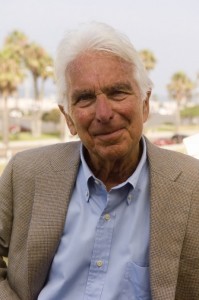 Warren Bennis (1925-2014) did for leadership what Peter Drucker did for management. Before Warren there was no “field of leadership” as such; he helped build it and served as godfather to this new field of study, practice and art. He saw the need for a new way to lead organizations and shaped the art and practice of modern day organizational leadership worldwide.
Warren Bennis (1925-2014) did for leadership what Peter Drucker did for management. Before Warren there was no “field of leadership” as such; he helped build it and served as godfather to this new field of study, practice and art. He saw the need for a new way to lead organizations and shaped the art and practice of modern day organizational leadership worldwide.
Mentored by social psychologist Doug McGregor, he achieved prestigious graduate degrees, then served on various faculties, as a provost and a university president. Ultimately, he realized that his calling was teaching, not administration. For a while, he lived in the San Francisco Bay Area where he worked with Werner Erhard, the founder of EST, a highly-popular personal development program that featured prominently in the human potential movement of the 1970s. In 1979, Warren moved to the University of Southern California business school which remained his base until his retirement. He authored or co-authored many books including On Becoming a Leader, Reinventing Leadership, Why Leaders Can’t Lead, and over 25 other books.
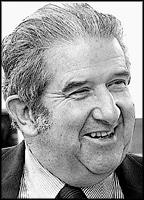 Willis Harman (1918-1997) began his career as an educator following a stint in the U.S. Navy during the WWII years. He joined the Stanford faculty in 1952, teaching electrical engineering. At Stanford he also taught classes on human potential. He then became a social scientist for Stanford Research International (SRI) where he initiated a futures research program, exploring the national and global future. This included the study of LSD, remote viewing and other government funded research. From 1975 to his death in 1997 he served as President of the Institute of Noetic Sciences, which researches human consciousness.
Willis Harman (1918-1997) began his career as an educator following a stint in the U.S. Navy during the WWII years. He joined the Stanford faculty in 1952, teaching electrical engineering. At Stanford he also taught classes on human potential. He then became a social scientist for Stanford Research International (SRI) where he initiated a futures research program, exploring the national and global future. This included the study of LSD, remote viewing and other government funded research. From 1975 to his death in 1997 he served as President of the Institute of Noetic Sciences, which researches human consciousness.
Willis served as a member of the Board of Regents of the University of California and, in the late 1980s, founded the World Business Academy which published The New Business of Business: Sharing Responsibility for a Positive Global Future which he co-edited. His other books include An Incomplete Guide to the Future, Changing Images of Man, Higher Creativity, Paths to Peace, New Metaphysical Foundations of Science, and Biology Revisioned.
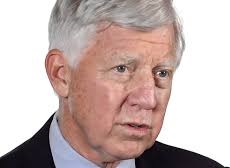 Bill George is professor of management practice at Harvard Business School, where he has taught leadership since 2004. He is the author of four best-selling books: 7 Lessons for Leading in Crisis, True North, Finding Your True North, and Authentic Leadership. With co-author Doug Baker he recently published True North Groups. Bill is the former chairman and chief executive officer of Medtronic which he joined in 1989 as president and chief operating officer. He was their chief executive officer from 1991-2001 and board chair from 1996-2002. He currently serves as a director of ExxonMobil, Goldman Sachs, and the Mayo Clinic and also served on the board of Novartis and Target Corporation. He is currently a trustee of the World Economic Forum USA and a former trustee of Carnegie Endowment for International Peace. He has been named one of the “Top 25 Business Leaders of the Past 25 Years” by PBS; “Executive of the Year-2001” by the Academy of Management; and “Director of the Year-2001-02” by the National Association of Corporate Directors. Bill has been a meditation practitioner for more than 40 years and is trying to help leaders transform their thinking from “me” to “we.”
Bill George is professor of management practice at Harvard Business School, where he has taught leadership since 2004. He is the author of four best-selling books: 7 Lessons for Leading in Crisis, True North, Finding Your True North, and Authentic Leadership. With co-author Doug Baker he recently published True North Groups. Bill is the former chairman and chief executive officer of Medtronic which he joined in 1989 as president and chief operating officer. He was their chief executive officer from 1991-2001 and board chair from 1996-2002. He currently serves as a director of ExxonMobil, Goldman Sachs, and the Mayo Clinic and also served on the board of Novartis and Target Corporation. He is currently a trustee of the World Economic Forum USA and a former trustee of Carnegie Endowment for International Peace. He has been named one of the “Top 25 Business Leaders of the Past 25 Years” by PBS; “Executive of the Year-2001” by the Academy of Management; and “Director of the Year-2001-02” by the National Association of Corporate Directors. Bill has been a meditation practitioner for more than 40 years and is trying to help leaders transform their thinking from “me” to “we.”
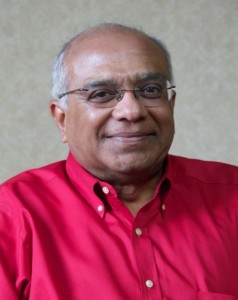 Srikumar Rao was born in India and earned his MBA at the Indian Institute of Management in Ahmedabad. He has since served as Adjunct Professor at Columbia Business School, London Business School and the Haas School of Business, University of California at Berkeley. Through the Rao Institute he offers the Creativity and Personal Mastery, an invitational course which he describes as follows:
Srikumar Rao was born in India and earned his MBA at the Indian Institute of Management in Ahmedabad. He has since served as Adjunct Professor at Columbia Business School, London Business School and the Haas School of Business, University of California at Berkeley. Through the Rao Institute he offers the Creativity and Personal Mastery, an invitational course which he describes as follows:
The live version of the Creativity and Personal Mastery program is the longest running form of The Rao Institute’s course offerings. This course thrives off the collaboration with others, interactive lessons, and a fundamental change in your way of thinking.
In a personal conversation with the author, Srikumar acknowledges that the work of Michael Ray at Stanford School of Business (2014 cohort) including his Creativity in Business class and subsequent training program have been major influences on his own work.
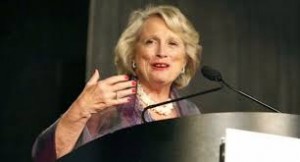 Linda Alepin is Chair Emeritus and a co-founder of Global Women’s Leadership Network (GWLN). She teaches at Santa Clara University and is the Dean’s Executive Professor of Leadership. With more than 30 years of experience in the high-tech industry, she has spent 10 years teaching leadership in the corporate arena. GWLN’s graduate community is a collaborative group of nearly 200 leaders who have completed its transformational leadership education program. Graduates are currently working in over 40 countries.
Linda Alepin is Chair Emeritus and a co-founder of Global Women’s Leadership Network (GWLN). She teaches at Santa Clara University and is the Dean’s Executive Professor of Leadership. With more than 30 years of experience in the high-tech industry, she has spent 10 years teaching leadership in the corporate arena. GWLN’s graduate community is a collaborative group of nearly 200 leaders who have completed its transformational leadership education program. Graduates are currently working in over 40 countries.
She received the prestigious 2013 Eleanor Roosevelt Fund Award from the American Association of University Women for making great strides to empower women leaders around the world. She was the recipient of the Santa Clara County Commission on the Status of Women’s Award for Contributions to the Equality of Women. Linda was also recognized by the Girl Scouts of NorCal, receiving their “Forever Green Award” for her significant impact in sustaining the environment, economy or community.
Civil Society:
 Mother Jones (1837-1930) was born Mary Harris Jones in Ireland. After migrating to the U.S. at age 23 she worked as a Chicago schoolteacher and dressmaker, eventually going on to become a prominent labor and community organizer. She then helped coordinate major strikes and cofounded the Industrial Workers of the World. She strongly believed that “working men deserved a wage that would allow women to stay home to care for their kids.” The strikes were getting better organized and bringing some beneficial results, such as “better pay for the workers.” As a union organizer, she gained prominence for organizing the wives and children of striking workers in demonstrations on their behalf. She was once termed “the most dangerous woman in America” by a West Virginia District Attorney.
Mother Jones (1837-1930) was born Mary Harris Jones in Ireland. After migrating to the U.S. at age 23 she worked as a Chicago schoolteacher and dressmaker, eventually going on to become a prominent labor and community organizer. She then helped coordinate major strikes and cofounded the Industrial Workers of the World. She strongly believed that “working men deserved a wage that would allow women to stay home to care for their kids.” The strikes were getting better organized and bringing some beneficial results, such as “better pay for the workers.” As a union organizer, she gained prominence for organizing the wives and children of striking workers in demonstrations on their behalf. She was once termed “the most dangerous woman in America” by a West Virginia District Attorney.
By age 60, she had effectively assumed the persona of “Mother Jones” by claiming to be older than she actually was, wearing outdated black dresses and referring to the male workers that she helped as “her boys”. In 1903 Jones organized children, who were working to participate in the “Children’s Crusade”, a march to the hometown of President Theodore Roosevelt with banners declaring “We want to go to school and not the mines.” The incident brought the issue of child labor to the forefront of the U.S. public agenda.
Adam Smith (1723-1790), widely accepted as the “father of capitalism,” authored The Wealth of Nations in the mid-1700s which has since become the ‘bible’ for market capitalists much like Marx and Engel’s Communist Manifesto serves as the cornerstone of communist philosophy. Smith also authored a second book, The Theory of Moral Sentiments, which hardly ever gets mentioned by today’s champions of Western capitalism.
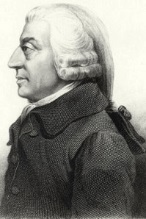 Capitalism as envisioned by Smith is a complimentary system for a democratic society. In its purest form it engenders freedom, independence and rewards initiative. It allows for compassionate stewardship of the common good, while encouraging creativity, enterprise, innovation and responsibility. The exponential rise of technology, advertising and government regulation since Smith’s day has, however, helped to create a marketplace with greatly reduced freedom. He could not have anticipated the power of mass advertising that is so prevalent today. As a moral philosopher, Smith wrote about the “invisible hand” of the free market but he had no way of anticipating how un-free the market could become over the course of two and a half centuries.
Capitalism as envisioned by Smith is a complimentary system for a democratic society. In its purest form it engenders freedom, independence and rewards initiative. It allows for compassionate stewardship of the common good, while encouraging creativity, enterprise, innovation and responsibility. The exponential rise of technology, advertising and government regulation since Smith’s day has, however, helped to create a marketplace with greatly reduced freedom. He could not have anticipated the power of mass advertising that is so prevalent today. As a moral philosopher, Smith wrote about the “invisible hand” of the free market but he had no way of anticipating how un-free the market could become over the course of two and a half centuries.
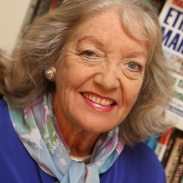
Hazel Henderson is the founder of Ethical Markets Media, LLC and the creator and co-executive producer of its TV series. She is a world renowned futurist, evolutionary economist, a worldwide syndicated columnist, consultant on sustainable development, and author of the award-winning book Ethical Markets: Growing the Green and eight other books. Her syndicated editorials appear in 27 languages and in 200 newspapers. In 2013, she was inducted into the International Society of Sustainability Professionals Hall of Fame.
My knowing of this iconoclastic global activist puts her in a unique category of tenacious elder, marching tirelessly over decades of time challenging the sacred cows of the market fundamentalists who preach “free market” but do everything within their power to skew the market in their favor. In the 1960s she realized that most social and environmental problems had their roots in a system of economics that was fundamentally flawed. Self-taught over the past half century, she has become renowned as a credible oracle who confronts the status quo. As Wikipedia defines iconoclast: one who challenges “cherished beliefs or venerated institutions on the grounds that they are erroneous or pernicious.” Hazel certainly qualifies!
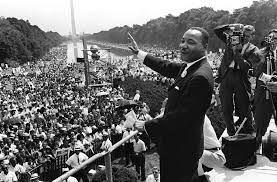 Martin Luther King Jr. (1929-1968) is widely regarded as America’s pre-eminent advocate of nonviolence and one of the greatest nonviolent leaders in world history. Drawing inspiration from both his Christian faith and the peaceful teachings of Mahatma Gandhi and Dr. Howard Thurman, King led a nonviolent movement in the late 1950’s and 1960s to achieve legal equality for African-Americans in the United States. While others were advocating for freedom by “any means necessary,” including violence, he used the power of words and acts of nonviolent resistance, such as protests, grassroots organizing, and civil disobedience to achieve seemingly-impossible goals. He went on to lead similar campaigns against poverty and international conflict, always maintaining fidelity to his principles that men and women everywhere, regardless of color or creed, are equal members of the human family.
Martin Luther King Jr. (1929-1968) is widely regarded as America’s pre-eminent advocate of nonviolence and one of the greatest nonviolent leaders in world history. Drawing inspiration from both his Christian faith and the peaceful teachings of Mahatma Gandhi and Dr. Howard Thurman, King led a nonviolent movement in the late 1950’s and 1960s to achieve legal equality for African-Americans in the United States. While others were advocating for freedom by “any means necessary,” including violence, he used the power of words and acts of nonviolent resistance, such as protests, grassroots organizing, and civil disobedience to achieve seemingly-impossible goals. He went on to lead similar campaigns against poverty and international conflict, always maintaining fidelity to his principles that men and women everywhere, regardless of color or creed, are equal members of the human family.
His “I had a dream” speech in Washington (see photo above) is still inspiring social activism and non-violence over half a century later. He received the Nobel Peace Prize and was named Time magazine’s Man of the Year in 1963. He was assassinated in 1968, leaving a powerful legacy at the age of 39.
Mass Media:
Oprah Gail Winfrey is an American media mogul, talk show host, actress, producer, and philanthropist. Winfrey is best known for her talk show The Oprah Winfrey Show, which was the highest-rated program of its kind in history and was nationally syndicated from 1986 to 2011. Several assessments regard her as the most influential woman in the world.
Christianity Today published an article called “the Church of O” and concluded that Oprah had attained the status of spiritual leader:
Since 1994, when she abandoned traditional talk-show fare for more edifying content, and 1998, when she began “Change Your Life TV”, Oprah’s most significant role has become that of a spiritual leader. To her audience of more than 22 million mostly female viewers, she has become a post-modern priestess—an icon of church-free spirituality.
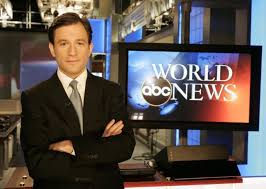 Dan Harris has been with ABC News since 2000. He served as anchor for World News Sunday from 2006 to 2011 and frequently anchors World News, ABC World News Tonight weekend editions and Nightline and is a frequent contributor to World News. In October 2010, he was named the new co-anchor for the weekend edition of Good Morning America, succeeding Bill Weir. In October 2013, he was named a co-anchor for Nightline. In 2009 he won an Emmy Award for one of his Nightline reports. Harris is a meditator and has been featured in Mindful magazine.
Dan Harris has been with ABC News since 2000. He served as anchor for World News Sunday from 2006 to 2011 and frequently anchors World News, ABC World News Tonight weekend editions and Nightline and is a frequent contributor to World News. In October 2010, he was named the new co-anchor for the weekend edition of Good Morning America, succeeding Bill Weir. In October 2013, he was named a co-anchor for Nightline. In 2009 he won an Emmy Award for one of his Nightline reports. Harris is a meditator and has been featured in Mindful magazine.
He is also the author of 10% Happier: How I Tamed the Voice in My Head, Reduced Stress Without Losing My Edge, and Found Self-Help That Really Works. The book details his discovery of the benefits of meditation, and his resolution “of the apparent conflict between meditation-induced equanimity and the aggressive competitiveness required for success as a TV-news journalist” according to Wikipedia.
Business:
Dame Anita Roddick (1942-2007) was a friend. After her passing I wrote about her for my newsletter. Here is part of that tribute:
 As the responsible business movement started gaining traction in the late 1980s, I recall the beginning of Business for Social Responsibility (BSR) and USA Today featuring the story in May 1992 with pictures of two of the movement’s icons, Ben Cohen, of Ben & Jerry’s, and Anita. She was a fierce advocate of social justice and an inspiration to millions of women, both in the industrialized West and indigenous regions of the world where she loved to visit.
As the responsible business movement started gaining traction in the late 1980s, I recall the beginning of Business for Social Responsibility (BSR) and USA Today featuring the story in May 1992 with pictures of two of the movement’s icons, Ben Cohen, of Ben & Jerry’s, and Anita. She was a fierce advocate of social justice and an inspiration to millions of women, both in the industrialized West and indigenous regions of the world where she loved to visit.
Anita was equally at home with the Queen or Princess Diana, meeting with investment bankers or having her face painted by indigenous tribes all over the world. She has marched for social justice and even been tear-gassed while demonstrating in Seattle – all with a bombastic irreverence of anything haughty.
In 2003, Queen Elizabeth bestowed on Anita the title of Dame of the British Empire. Prime Minister Gordon Brown called her a true pioneer. Paul Hawken called her a force of nature. Indeed Anita left a rich legacy and tall shoulders for the rest of us to stand upon.
Of one thing I’m certain: No one I have ever known has lived and worked with as much energy as Anita. I doubt things will be any different for her in the unfettered energies of the spiritual ethers. I am expecting an occasional kick in the pants or poke in the eye from her spirit whenever I get a bit too full of myself. And I will say, “Thanks Anita!”
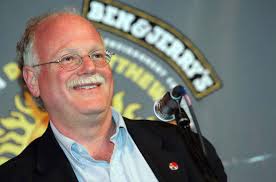 Ben Cohen and Jerry Greenfield completed a correspondence course on making ice cream from Pennsylvania State University’s Creamery in 1977. The rest is history. They rented their first plant in 1980 and opened their first Ben & Jerry’s franchise in 1981. In 2000, Ben & Jerry’s sold the company to Anglo-Dutch multinational food giant Unilever.
Ben Cohen and Jerry Greenfield completed a correspondence course on making ice cream from Pennsylvania State University’s Creamery in 1977. The rest is history. They rented their first plant in 1980 and opened their first Ben & Jerry’s franchise in 1981. In 2000, Ben & Jerry’s sold the company to Anglo-Dutch multinational food giant Unilever.
According to The Guardian newspaper, Cohen is no longer a co-owner of the prototype hippy business-with-a-conscience, and quotes him as being “more convinced than ever that business can be a force for good”.
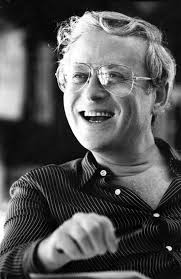 Jeremy Tarcher (1932-2015) was the founder of J. P. Tarcher, a publisher of self-help and New Age books, now part of the Tarcher Perigee imprint of Penguin Random House. He turned to publishing out of concerns about tying his career to his wife’s fame. In 1958 he married puppeteer Shari Lewis, a regular on the “Ed Sullivan Show” and famous for her sock puppet sidekick Lamb Chop. He produced her Saturday morning TV show in New York for several years.
Jeremy Tarcher (1932-2015) was the founder of J. P. Tarcher, a publisher of self-help and New Age books, now part of the Tarcher Perigee imprint of Penguin Random House. He turned to publishing out of concerns about tying his career to his wife’s fame. In 1958 he married puppeteer Shari Lewis, a regular on the “Ed Sullivan Show” and famous for her sock puppet sidekick Lamb Chop. He produced her Saturday morning TV show in New York for several years.
Jeremy (shown at left in a 1982 photo) helped spark a spiritual movement and introduced ideas to the mainstream that have greatly influenced Mind/Body/Spirit publishing as well as modern self-help publishing. “Jeremy’s instinct for upcoming trends in the personal development genres was unequaled,” says Tarcher Perigee editor and longtime friend Joel Fotinos.
I worked with Jeremy in several capacities in the 1990s and can personally attest to the man’s generosity, compassion and caring.
William McKnight (1887–1978) was an American businessman and philanthropist who served his entire career in the 3M Corporation, rising to chairman of the board from 1949 to 1966. Many believe McKnight’s greatest contribution was as a business philosopher, because he created a corporate culture that encourages employee initiative and innovation. His basic rule of management was laid out in 1948:
 As our business grows, it becomes increasingly necessary to delegate responsibility and to encourage men and women to exercise their initiative. This requires considerable tolerance. Those men and women, to whom we delegate authority and responsibility, if they are good people, are going to want to do their jobs in their own way. Mistakes will be made. But if a person is essentially right, the mistakes he or she makes are not as serious in the long run as the mistakes management will make if it undertakes to tell those in authority exactly how they must do their jobs. Management that is destructively critical when mistakes are made kills initiative. And it’s essential that we have many people with initiative if we are to continue to grow.
As our business grows, it becomes increasingly necessary to delegate responsibility and to encourage men and women to exercise their initiative. This requires considerable tolerance. Those men and women, to whom we delegate authority and responsibility, if they are good people, are going to want to do their jobs in their own way. Mistakes will be made. But if a person is essentially right, the mistakes he or she makes are not as serious in the long run as the mistakes management will make if it undertakes to tell those in authority exactly how they must do their jobs. Management that is destructively critical when mistakes are made kills initiative. And it’s essential that we have many people with initiative if we are to continue to grow.
McKnight and his wife Maude founded The McKnight Foundation in 1953 as an independent private philanthropic organization, un-affiliated with 3M.
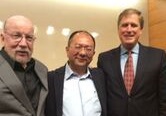 Sam Chan is pictured at the right between FutureShapers founders John Renesch and Tom Eddington after his appearance as a special guest on “Meet the Visionaries” in Fall 2015. Sam is the founder and President of Applied Computer Online Services (ACOS) – “The World’s Largest Computer Store Online.” Sam is recognized and respected for his ability to achieve and maintain peak performance states, which has enabled him to build a consistently profitable business for the last 30 years. He came to the U.S. to work in sales for Advanced Micro Devices (AMD), one of Silicon Valley’s earliest technology developers. In the 1980s, he started building computers for people, on the side, running a two line newspaper ad to attract customers. ACOS now carries over $2.8 billion in inventory ready to ship worldwide.
Sam Chan is pictured at the right between FutureShapers founders John Renesch and Tom Eddington after his appearance as a special guest on “Meet the Visionaries” in Fall 2015. Sam is the founder and President of Applied Computer Online Services (ACOS) – “The World’s Largest Computer Store Online.” Sam is recognized and respected for his ability to achieve and maintain peak performance states, which has enabled him to build a consistently profitable business for the last 30 years. He came to the U.S. to work in sales for Advanced Micro Devices (AMD), one of Silicon Valley’s earliest technology developers. In the 1980s, he started building computers for people, on the side, running a two line newspaper ad to attract customers. ACOS now carries over $2.8 billion in inventory ready to ship worldwide.
He has managed to balance a thriving business with a deep personal spiritual practice, devoting time to his Buddhist practice, his family and community service. Born in Malaysia, the eldest of eight children, Sam assumed a caretaker role early in his life. Greatly influenced by his grandmother, he developed a compassionate personality that carries over into the way he works with people. He strives to maintain what he calls “calm mind.” He is an avid student of psychology, Buddhism and other spiritual disciplines.
Earl Bakken co-founded Medtronic in 1949 with a unique mission: “To contribute to human welfare by application of biomedical engineering in the research, design, manufacture, and sale of instruments or appliances that alleviate pain, restore health, and extend life.” Today, Medtronic is the world’s largest standalone medical technology development company.
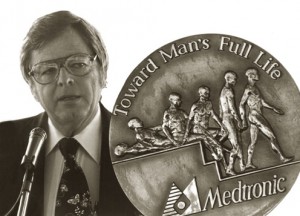 Engineer, businessman and philanthropist, Earl developed the first external, battery-operated, transistorized, wearable artificial pacemaker in 1957. He retired from Medtronic in 1989 and began a second life at Kiholo Bay on Hawaii’s Big Island and created North Hawaii Community Hospital, a base from which he continues working to combine Eastern and Western approaches to medicine to develop a more holistic approach to health care. In 2010 he received the first Spirit of the Center Award, University of Minnesota Center for Spirituality and Healing.
Engineer, businessman and philanthropist, Earl developed the first external, battery-operated, transistorized, wearable artificial pacemaker in 1957. He retired from Medtronic in 1989 and began a second life at Kiholo Bay on Hawaii’s Big Island and created North Hawaii Community Hospital, a base from which he continues working to combine Eastern and Western approaches to medicine to develop a more holistic approach to health care. In 2010 he received the first Spirit of the Center Award, University of Minnesota Center for Spirituality and Healing.
Earl continues a practice be began before retiring from Medtronic – to meet personally with each new employee. Now in his 90s, he still returns to the Minnesota-based company several times a year to meet new employees and explain the Medtronic Mission to them.
Paul Polman is CEO of Unilever and Chairman of the World Business Council for Sustainable Development, a member of the International Business Council of the World Economic Forum, a member of the B Team and sits on the Board of the UN Global Compact and the Consumer Goods Forum, where he co-chairs the Sustainability Committee.
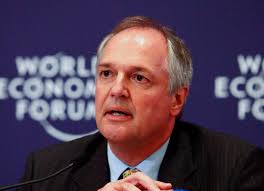 Other roles have included UK Business Ambassador by invitation of Prime Minister David Cameron, member of the Global Taskforce for Scaling up Nutrition, Counsellor of One Young World, served on the International Council of the Global Commission on the Economy and Climate, and served on the High Level Panel on the Post-2015 Development Agenda, presenting recommendations on the successor to the UN Millennium Development Goals.
Other roles have included UK Business Ambassador by invitation of Prime Minister David Cameron, member of the Global Taskforce for Scaling up Nutrition, Counsellor of One Young World, served on the International Council of the Global Commission on the Economy and Climate, and served on the High Level Panel on the Post-2015 Development Agenda, presenting recommendations on the successor to the UN Millennium Development Goals.
Paul also serves as President of the Kilimanjaro Blind trust and Chairman of Perkins International Advisory Board. He is a member of the European Round Table, The International Business Council of the World Economic Forum, and the Swiss American Chamber of Commerce.
Government:
Vaclav Havel (1936-2011) served as the first President of the Czech Republic, from 1993-2003. He was a writer, playwright and philosopher who became a initially a political dissident and eventually a visionary statesman. His political philosophy was one of anti-consumerism, humanitarianism, environmentalism, civil activism, and direct democracy.
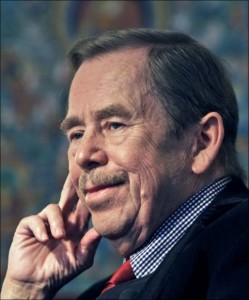 Two of Havel’s quotes endeared him to me, the first of which is: “Without a global revolution in the sphere of human consciousness, nothing will change for the better in the sphere of our being as humans, and the catastrophe toward which this world is headed – be it ecological, social, demographic or a general breakdown – will be unavoidable.” The other was in response to a question about what could change the direction of our present civilization, to which he replied: “The only option is a change in the sphere of the spirit, in the sphere of human conscience. It is not enough to invent new machines, new regulations, or new institutions. We must develop a new understanding of the true purpose of our existence on this Earth.”
Two of Havel’s quotes endeared him to me, the first of which is: “Without a global revolution in the sphere of human consciousness, nothing will change for the better in the sphere of our being as humans, and the catastrophe toward which this world is headed – be it ecological, social, demographic or a general breakdown – will be unavoidable.” The other was in response to a question about what could change the direction of our present civilization, to which he replied: “The only option is a change in the sphere of the spirit, in the sphere of human conscience. It is not enough to invent new machines, new regulations, or new institutions. We must develop a new understanding of the true purpose of our existence on this Earth.”
The author of several books, Havel’s work on the power of powerlessness is featured in my Mini Keynote editorial in 2012 entitled “The Myth of Powerlessness.”
Mikhail Gorbachev was the first president of the Soviet Union, serving from 1990 to 1991. He was awarded the Nobel Prize for Peace for his leadership role in ending the Cold War and promoting peaceful international relations. In 1985, Gorbachev was elected general secretary of the Communist Party. He inherited the issues that his colleagues had been struggling with, including serious domestic problems and escalating Cold War tensions. But his youthful energy and enthusiasm gave the Soviet Union hope that a new generation of leaders geared toward positive change had taken charge.
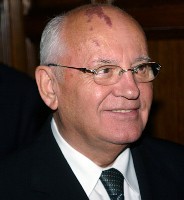 He promoted more peaceful international relations. He ordered Soviet troops to withdraw from Afghanistan and was instrumental in ending the Cold War. According to biography.com, he “is likewise credited for his crucial role in the fall of the Berlin Wall and subsequent reunification of Germany.” For his leadership and contributions to the overall betterment of world development, he was awarded the Nobel Peace Prize in 1990. At the end of 1991 he resigned as USSR president and established the Gorbachev Foundation (which his daughter now runs) and Green Cross International, whose mission is to educate the world public about environmental problems, inculcation of a new environmental consciousness, the overcoming of environmental consequences of the Cold War and the arms race. Green Cross chapters exist in 23 countries of the world.
He promoted more peaceful international relations. He ordered Soviet troops to withdraw from Afghanistan and was instrumental in ending the Cold War. According to biography.com, he “is likewise credited for his crucial role in the fall of the Berlin Wall and subsequent reunification of Germany.” For his leadership and contributions to the overall betterment of world development, he was awarded the Nobel Peace Prize in 1990. At the end of 1991 he resigned as USSR president and established the Gorbachev Foundation (which his daughter now runs) and Green Cross International, whose mission is to educate the world public about environmental problems, inculcation of a new environmental consciousness, the overcoming of environmental consequences of the Cold War and the arms race. Green Cross chapters exist in 23 countries of the world.
Science:
R. Buckminster Fuller (1895-1983) was a renowned 20th century inventor and visionary who dedicated his life to making the world work for all of humanity. Throughout the course of his life he held 28 patents, authored 28 books, and received 47 honorary degrees.  His most well known creation, the geodesic dome, has been produced over 300,000 times worldwide, his true impact on the world today can be found in his continued influence upon generations of designers, architects, scientists and artists working to create a more sustainable planet. He spent his life working across multiple fields, including architecture, design, geometry, engineering, science, cartography and education, in his pursuit to make the world work for 100% of humanity. Hailed as “one of the greatest minds of our times,” Fuller was renowned for his comprehensive perspective on the world’s problems, pioneering solutions that reflected the potential of innovative design to create technology that does “more with less.”
His most well known creation, the geodesic dome, has been produced over 300,000 times worldwide, his true impact on the world today can be found in his continued influence upon generations of designers, architects, scientists and artists working to create a more sustainable planet. He spent his life working across multiple fields, including architecture, design, geometry, engineering, science, cartography and education, in his pursuit to make the world work for 100% of humanity. Hailed as “one of the greatest minds of our times,” Fuller was renowned for his comprehensive perspective on the world’s problems, pioneering solutions that reflected the potential of innovative design to create technology that does “more with less.”
Affectionately known a “Bucky” to his friends, Fuller created the “Spaceship Earth” metaphor which has lasted several generations. I had the pleasure of meeting him and hearing him lecture in his final years and feel my own work has been influenced immensely as a result of this experience. Part of his legacy was having a molecule named after him – Buckminsterfullerene. Often called “Bucky balls,” this molecule is spherical with the formula C60. Rice University scientists were awarded the 1996 Nobel Prize in Chemistry for their roles in the discovery of buckminsterfullerene and the related class of molecules, the fullerenes.
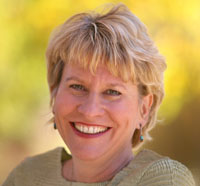 Marilyn Schlitz is a social anthropologist, researcher, and an award winning writer. She serves as President Emeritus and a Senior Fellow at the Institute of Noetic Sciences, a consciousness research organization founded by NASA Astronaut Edgar Mitchell in 1973. Additionally, she is a Senior Scientist at the California Pacific Medical Center, where she focuses on health and healing, and a board member of Pacifica Graduate Institute. She has a Master’s Degree in Social and Behavioral Sciences from the University of Texas, San Antonio and received her Ph.D. in anthropology from the University of Texas, Austin. She also earned two post-doctoral fellowships: one from the Cognitive Sciences Laboratory at Science Applications International Corporation and one in Psychology from Stanford University. For more than three decades, Marilyn has been a leader in the field of consciousness studies. Her research and extensive publications focus on personal and social transformation, cultural pluralism, extended human capacities, and mind body medicine. Her books include Consciousness and Healing: Integral Approaches to Mind Body Medicine and Living Deeply: The Art and Science of Transformation in Everyday Life.
Marilyn Schlitz is a social anthropologist, researcher, and an award winning writer. She serves as President Emeritus and a Senior Fellow at the Institute of Noetic Sciences, a consciousness research organization founded by NASA Astronaut Edgar Mitchell in 1973. Additionally, she is a Senior Scientist at the California Pacific Medical Center, where she focuses on health and healing, and a board member of Pacifica Graduate Institute. She has a Master’s Degree in Social and Behavioral Sciences from the University of Texas, San Antonio and received her Ph.D. in anthropology from the University of Texas, Austin. She also earned two post-doctoral fellowships: one from the Cognitive Sciences Laboratory at Science Applications International Corporation and one in Psychology from Stanford University. For more than three decades, Marilyn has been a leader in the field of consciousness studies. Her research and extensive publications focus on personal and social transformation, cultural pluralism, extended human capacities, and mind body medicine. Her books include Consciousness and Healing: Integral Approaches to Mind Body Medicine and Living Deeply: The Art and Science of Transformation in Everyday Life.
Consciousness and Spirituality:
Jean Houston is a scholar, philosopher and researcher in human capacities. She is one of the foremost visionary thinkers of our time and is often regarded as one of the principal founders of the human potential movement. She is noted for her ability to combine a deep knowledge of history, culture, new science, spirituality and human development into her teaching. As advisor to UNICEF in human and cultural development, she has worked around the world helping to implement some of their extensive educational programs. In 1999, she traveled to Dharamsala, India as a member of a group chosen to work with the Dalai Lama in a learning and advisory capacity (pictured with His Holiness below).
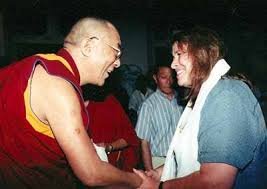 Jean has also served in an advisory capacity to several occupants of the White House in Washington. As a high school student she worked closely with Eleanor Roosevelt in developing strategies to introduce international awareness and United Nations work with young people. She is the author of 26 books including Jump Time, A Passion for the Possible, and The Possible Human. Buckminster Fuller said of her, “Jean Houston’s mind should be considered a national treasure.”
Jean has also served in an advisory capacity to several occupants of the White House in Washington. As a high school student she worked closely with Eleanor Roosevelt in developing strategies to introduce international awareness and United Nations work with young people. She is the author of 26 books including Jump Time, A Passion for the Possible, and The Possible Human. Buckminster Fuller said of her, “Jean Houston’s mind should be considered a national treasure.”
His Holiness the 14th Dalai Lama, the spiritual leader of Tibet, was born on July 6, 1935, to a farming family, in a small hamlet located in northeastern Tibet. At the age of two, he was the child who was recognized as the reincarnation of the previous 13th Dalai Lama and named Tenzin Gyatso. In 1950 he was called upon to assume full political power after China’s invasion of Tibet in 1949/50. In 1954, he went to Beijing for peace talks with Mao Zedong and other Chinese leaders, including Deng Xiaoping and Chou Enlai. Sadly, in 1959, with the brutal suppression of the Tibetan national uprising in Lhasa by Chinese troops, he was forced to escape into exile. Since then he has been living in Dharamsala in northern India.
 In 1989 he was awarded the Nobel Peace Prize for his non-violent struggle for the liberation of Tibet. He has travelled to more than 67 countries spanning 6 continents and has received over 150 awards, honorary doctorates, prizes, etc., in recognition of his message of peace, non-violence, inter-religious understanding, universal responsibility and compassion. He has also authored or co-authored more than 110 books. It has been reported that he will consult the high Lamas of the Tibetan Buddhist traditions, the Tibetan public, and other concerned people who follow Tibetan Buddhism, and re-evaluate whether the institution of the Dalai Lama should continue or not.
In 1989 he was awarded the Nobel Peace Prize for his non-violent struggle for the liberation of Tibet. He has travelled to more than 67 countries spanning 6 continents and has received over 150 awards, honorary doctorates, prizes, etc., in recognition of his message of peace, non-violence, inter-religious understanding, universal responsibility and compassion. He has also authored or co-authored more than 110 books. It has been reported that he will consult the high Lamas of the Tibetan Buddhist traditions, the Tibetan public, and other concerned people who follow Tibetan Buddhism, and re-evaluate whether the institution of the Dalai Lama should continue or not.
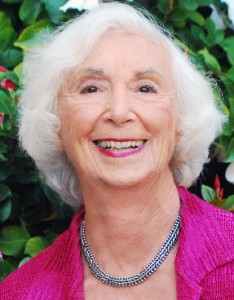 Barbara Marx Hubbard has been called “the voice for conscious evolution…” by Deepak Chopra. Buckminster Fuller said, “There is no doubt in my mind that Barbara Marx Hubbard – who helped introduce the concept of futurism to society – is the best informed human now alive regarding futurism and the foresights it has produced.” In addition to being a futurist, she is an evolutionary thinker who believes that global change happens when we work collectively and selflessly for the greater good. She realizes that the lessons of evolution teach us that problems are evolutionary drivers, and crises precede transformation, giving a new way of seeing and responding to our global situation. A prolific author and educator, she has written seven books on social and planetary evolution, including Conscious Evolution: Awakening the Power of our Social Potential. She has produced, hosted, and contributed to countless documentaries seen by millions of people around the world.
Barbara Marx Hubbard has been called “the voice for conscious evolution…” by Deepak Chopra. Buckminster Fuller said, “There is no doubt in my mind that Barbara Marx Hubbard – who helped introduce the concept of futurism to society – is the best informed human now alive regarding futurism and the foresights it has produced.” In addition to being a futurist, she is an evolutionary thinker who believes that global change happens when we work collectively and selflessly for the greater good. She realizes that the lessons of evolution teach us that problems are evolutionary drivers, and crises precede transformation, giving a new way of seeing and responding to our global situation. A prolific author and educator, she has written seven books on social and planetary evolution, including Conscious Evolution: Awakening the Power of our Social Potential. She has produced, hosted, and contributed to countless documentaries seen by millions of people around the world.
Barbara was the first person in my memory to use the term “conscious evolution” and I consider her the god-mother of the field. She is the founder of the Foundation for Conscious Evolution. She is not an idealist, nor does she believe that social and planetary change is simple. But she does believe that humanity has the tools, fortitude, and resolve to take the leap towards conscious evolution.
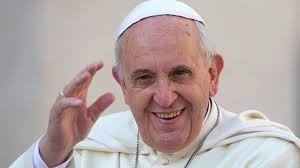 Pope Francis is leading a “Second American Revolution” acording to Paul Farrell in his July 21, 2015 Marketwatch column. Farrell sees the Pope as “leading a rebellion… an uprising of the masses against the world’s superrich capitalists.” Farrell continues: “Pope Francis…is rallying people across the Earth, middle class as well as poor, inciting billions to rise up in a global economic revolution, one that could suddenly sweep the planet, like the 1789 French storming the Bastille.”
Pope Francis is leading a “Second American Revolution” acording to Paul Farrell in his July 21, 2015 Marketwatch column. Farrell sees the Pope as “leading a rebellion… an uprising of the masses against the world’s superrich capitalists.” Farrell continues: “Pope Francis…is rallying people across the Earth, middle class as well as poor, inciting billions to rise up in a global economic revolution, one that could suddenly sweep the planet, like the 1789 French storming the Bastille.”
Pope Francis’s recent Encyclical Letter, published on May 24, 2015, could well be a trigger for this snap. In this historical document, he addresses what he terms the human roots of the ecological crisis, the principle of the common good, the harm we have inflicted on our sister – Mother Earth – our common home, the decline in the quality of human life and the breakdown of society. He calls for dialogue, transparency, new policies and, generally, a drastic change in how we relate to the environment and each other.
Mary Waskowiak is a Roman Catholic nun, a member of the Sisters of Mercy since she graduated from high school. She has served in a variety of capacities, including President of the order, within the international organization, headquartered in Dublin, Ireland. The Institute includes sisters who live and serve in eleven countries. Her background includes sixteen years in elected leadership in Sisters of Mercy as well as a three-year term in the Presidency of the Leadership Conference of Women Religious. She took on the role of Sisters of Mercy’s Director of Development for a global fund-raising campaign and now heads up Leadership & Spirituality Services / Coaching & Spiritual Direction for the order.
I first met Mary just after her term as head of the nearly 4,000 person organization. I have come to know Mary quite well and have observed her in a variety of circumstances. She never fails to inspire me by her commitment to being of service, and reaching out to anyone who looks like they could use support, an encouraging word, an assuring touch or soulful engagement of any kind.
Angeles Arrien (1940-2014) was a cultural anthropologist, educator, award-winning author, and consultant to numerous organizations and businesses inside and outside the medical field. She lectured nationally and internationally and conducted workshops bridging cultural anthropology, psychology, and mediation skills on issues such as conflict resolution and multi-cultural issues. She co-designed and implemented the Social and Cultural Anthropology Program at the California Institute of Integral Studies. 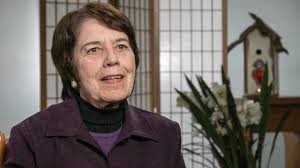 She was the founder and president of the Angeles Arrien Foundation for Cross-Cultural Education and Research, which focuses on the preservation of indigenous wisdoms, environmental sustainability, multi-cultural bridging and effective intergenerational leadership demonstrated by both elders and youth. She was also a fellow at the Institute of Noetic Sciences where rigorous science is applied to the study of consciousness.
She was the founder and president of the Angeles Arrien Foundation for Cross-Cultural Education and Research, which focuses on the preservation of indigenous wisdoms, environmental sustainability, multi-cultural bridging and effective intergenerational leadership demonstrated by both elders and youth. She was also a fellow at the Institute of Noetic Sciences where rigorous science is applied to the study of consciousness.
I had the distinct privilege with working with “Angie” on several projects, including a book entitled Working Together: Producing Synergy by Honoring Diversity. She was also one of my guests for the Howard Thurman Forum which I hosted for a couple of years. While she authored many books and multi-media programs perhaps her most popular was The Four-Fold Way: Walking the Paths of the Warrior, Teacher, Healer, and Visionary.
She is widely known for asking four questions: see video below.
Bill Wilson (1895-1971) was the co-founder of Alcoholics Anonymous (“AA”), an international mutual aid fellowship with millions of members worldwide. He is widely known as “Bill W.” since anonymity is a major tradition of AA. Following a mystical experience in a hospital recovery ward, he joined the Oxford Group where he tried to help other alcoholics, but succeeded only in keeping sober himself. 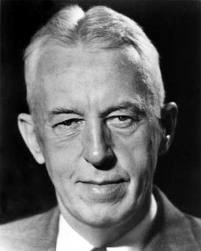 He was tempted to drink again and decided that to remain sober he needed to help another alcoholic. He eventually met “Dr. Bob,” an alcoholic Oxford Group member. He shared the theory that alcoholics suffer from a physical allergy and a mental obsession and that the only way he was able to stay sober was through having had a spiritual experience. Dr. Bob was familiar with the tenets of the Oxford Group and upon hearing Wilson’s experience, “began to pursue the spiritual remedy for his malady with a willingness that he had never before been able to muster. After a brief relapse, he sobered, never to drink again.
He was tempted to drink again and decided that to remain sober he needed to help another alcoholic. He eventually met “Dr. Bob,” an alcoholic Oxford Group member. He shared the theory that alcoholics suffer from a physical allergy and a mental obsession and that the only way he was able to stay sober was through having had a spiritual experience. Dr. Bob was familiar with the tenets of the Oxford Group and upon hearing Wilson’s experience, “began to pursue the spiritual remedy for his malady with a willingness that he had never before been able to muster. After a brief relapse, he sobered, never to drink again.
According to Wikipedia, Wilson is “perhaps best known as a synthesizer of ideas the man who pulled together various threads of psychology, theology, and democracy into a workable and life-saving system.” Aldous Huxley called him “the greatest social architect of our century” and Time magazine named him in their Time 100 List of The Most Important People of the 20th Century in 2005.
Service Providers:
W. Edwards Deming (1900-1993) was a systems thinker, and a visionary, whose tireless quest for the “truth” and unwavering belief in “continual improvement” led to a set of transformational theories and teachings that changed the way we think about quality, management and leadership. Throughout his career, he remained devoted to family, supportive of colleagues and friends, and always true to his word and beliefs. According to the W. Edwards Deming Institute, “the impact of his revolutionary ideas has been compared to those of Copernicus, Darwin and Freud. Others have referred to him as the father of the third phase of the Industrial Revolution.”
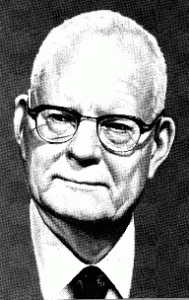 Educated initially as an electrical engineer and later specializing in mathematical physics, Deming is best known for his work in Japan after WWII, particularly with the leaders of Japanese industry in 1950 in Tokyo when Deming delivered a seminal speech on what he called Statistical Product Quality Administration. Many in Japan credit Deming and his teachings as the inspiration and foundation for what has become known as the Japanese post-war economic miracle of 1950 to 1960, when Japan rose from the ashes of war to become the second most powerful economy in the world. While his work was transformational at its core, many executives only saw the form of his work such as Quality Circles, about which Deming says, “That’s all window dressing. That’s not fundamental. That’s not getting at change and the transformation that must take place.”
Educated initially as an electrical engineer and later specializing in mathematical physics, Deming is best known for his work in Japan after WWII, particularly with the leaders of Japanese industry in 1950 in Tokyo when Deming delivered a seminal speech on what he called Statistical Product Quality Administration. Many in Japan credit Deming and his teachings as the inspiration and foundation for what has become known as the Japanese post-war economic miracle of 1950 to 1960, when Japan rose from the ashes of war to become the second most powerful economy in the world. While his work was transformational at its core, many executives only saw the form of his work such as Quality Circles, about which Deming says, “That’s all window dressing. That’s not fundamental. That’s not getting at change and the transformation that must take place.”
Jim Channon is a retired U.S. Army lieutenant colonel, New Age futurologist and business consultant. His book, the First Earth Battalion Operations Manual (1979, and later editions), points the way toward a New Age transformation of the U.S. military. 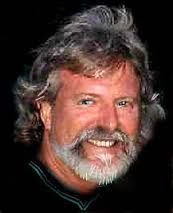 Heavy on graphics, it was partly inspired by the Whole Earth Catalog counterculture magazine. He proposed that members seek nondestructive methods of conflict resolution because their first loyalty would be to the planet. He adopted the term “warrior monk” for potential Battalion members. The character “Bill Django” played by Jeff Bridges in the 2009 film The Men Who Stare at Goats, is a fictionalized version of Channon.
Heavy on graphics, it was partly inspired by the Whole Earth Catalog counterculture magazine. He proposed that members seek nondestructive methods of conflict resolution because their first loyalty would be to the planet. He adopted the term “warrior monk” for potential Battalion members. The character “Bill Django” played by Jeff Bridges in the 2009 film The Men Who Stare at Goats, is a fictionalized version of Channon.
Since the military, he has become a consultant to major corporations, helping them in their envisioning processes. He says he’s a shaman at heart. To AT&T, Du Pont, Whirlpool and others, he’s a consultant. “Three things are missing from almost every organization I’ve been through,” he says “A sincere desire to love each other in a brotherly way, an ability to incorporate spiritual values in their work, and an ability to do something physical together.” On all three counts he thinks modern corporations could learn from tribal cultures: “Just because those guys can’t make toasters doesn’t mean that singing together, dancing together, and telling stories around a fire isn’t a damn good thing to do.”
Law and Justice:
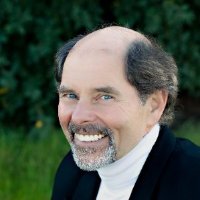 Stewart Levine is the founder of ResolutionWorks, a consulting and training organization. He is also a lawyer, counselor, mediator, facilitator, trainer, poet and author, widely recognized for creating agreement and empowerment in the most challenging circumstances. He thinks of himself as a “Resolutionary.” Through his law practice he realizes that fighting is a very ineffective way of resolving problems. He sees that the reason collaborations fall apart is that people do not spend the time at the beginning of new working relationships to create clarity about what they want to accomplish together, and how they will get there. His models for problem solving, collaboration and conflict resolution are used in many Fortune 100 Organizations and have been endorsed by countless thought leaders. He teaches communication and conflict management skills for The American Management Association, CEO Space and the International Partnering Institute. He is a lecturer at the University of California Berkeley Law School and on the MBA program at Dominican University of California and was recently inducted into the College of Law Practice Management. His books include Getting to Resolution and The Book of Agreements.
Stewart Levine is the founder of ResolutionWorks, a consulting and training organization. He is also a lawyer, counselor, mediator, facilitator, trainer, poet and author, widely recognized for creating agreement and empowerment in the most challenging circumstances. He thinks of himself as a “Resolutionary.” Through his law practice he realizes that fighting is a very ineffective way of resolving problems. He sees that the reason collaborations fall apart is that people do not spend the time at the beginning of new working relationships to create clarity about what they want to accomplish together, and how they will get there. His models for problem solving, collaboration and conflict resolution are used in many Fortune 100 Organizations and have been endorsed by countless thought leaders. He teaches communication and conflict management skills for The American Management Association, CEO Space and the International Partnering Institute. He is a lecturer at the University of California Berkeley Law School and on the MBA program at Dominican University of California and was recently inducted into the College of Law Practice Management. His books include Getting to Resolution and The Book of Agreements.